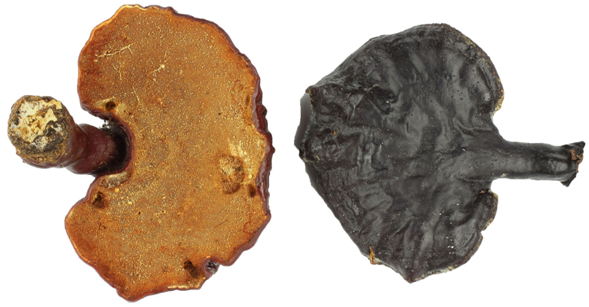Revision of the genus Colletotrichum
Colletotrichum (Ascomycota, Sordariomycetes, Glomerellales) is a very large fungal genus (> 800 species) that causes numerous economically important plant diseases worldwide, for example necrosis on fruits, leaves and stems of herbaceous and woody plants that are known as anthracnose, The genus also comprises endophytes that could be beneficial for plant health. Therefore, a correct species differentiation is crucial. However, the species can hardly be identified by morphology, and no living cultures or DNA are available of most species.
In order to study the systematics of Colletotrichum species, the fungi are cultivated on artificial media and characterised regarding cultural appearance and microscopical features like fruit bodies, conidia and appressoria. Phylogenetic trees are calculated on the basis of multilocus DNA sequence data (at least six loci). Species are differenciated by considering all available data (polyphasic approach).
The revision started 2008 at CBS-KNAW Fungal Biodiversity Centre (now Westerdijk Fungal Biodiversity Institute) in Utrecht, the Netherlands, and continues since 2014 at Senckenberg in collaboration with specialists from all over the world. To date, important species complexes were recognised and studied, the systematic position of many species (including the type species, C. lineola) clarified and about 80 new species described. In addition to working on further species complexes, the species diversity of certain host plants and biotopes in different countries is examined and entire Colletotrichum strain collections are revised, with new species constantly being discovered. An online data base for identification of Colletotrichum species on the basis of multiple DNA sequence data was developed and is regularly updated (https://qbank.eppo.int/fungi/).
Diversity and taxonomy of wood fungi from fruit trees
Fungi can locally necrotise and clog the vascular system in wood, which can lead to the inhibition of growth, fructification, wilting and dying off of branches and whole trees and reduces the fruit yield. The spektrum of ascomycetes, that cause necroses in the wood of fruit trees is very large and comprises species of many diverse genera, e.g. Diplodia, Eutypa, Phaeoacremonium und Diaporthe. As these ascomycetes grow inside the wood and rarely sporulate or form fruit bodies, they are very difficult to identify and are to date little studied.
Previous studies include the spektrum of ascomycetes in the wood of fruit trees in South Africa and resulted in the discovery of several new species in different genera. As there are little data from Germany, this topic is now studied as part of the project “German Barcode of Life – Bridging the gap between science and practice (GBOL-2) – Fungal pathogens & necrotic fungi in orchards”. The aim is the exploration of the fungal diversity in Germany, and also the collaboration on the development of a DNA-based diagnosis system for fungi (EcoChip).
Barcodes of microfungi are generated that are isolated from necroses in wood of fruit trees. Since even in Germany, a large proportion of the fungi in the wood of fruit trees are still unknown, so far only about half of the >170 differentiated species could be identified with certainty to the species level ; some of the new taxa have already been described. The GBOL project, which has been running for a number of years and in which other SGN research groups are/were already involved, received an award from the UN Decade on Biodiversity in 2016.
Diversity and biogepgraphy of phytopathogenic fungi in Germany
Biodiversity and biogeography of fungi have been in the focus of the Section Mycology for years, especially mapping of fungi in Saxony and of phytopathogenic microfungi (powdery and downy mildew pathogens, rost and smut fungi, anthracnose pathogens etc.). The occurrence of the genus Colletotrichum in Germany is also being investigated, which requires cultivation and DNA sequencing of the fungi. The focus here is initially on the species diversity on strawberries.
Continuous monitoring of the changing variability range of pathogens or pathogen types, allows for example an early detection of the occurence of new pathovars on cultivated plants. Particularly under the aspect of changing climatic conditions, the herbarium is a reliable and sustainable form of documentation of inventory as well as shifts in the distribution of fungi. At the same time, it provides a wide-range gene resource for specialised molecular studies. By means of DNA sequence data, taxonomic problems can be solved that allow an expanded understanding of host-fungus relationships.


